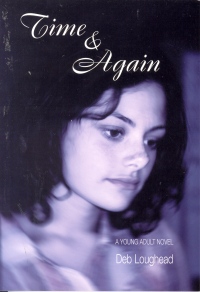| ________________
CM . . .
. Volume XI Number 14 . . . . March 18, 2005
excerpt:
Fifteen-year-old Kate, crabby and irritated beyond measure by her parents' rah-rah enthusiasm for her younger brother Kyle's outstanding baseball skills, is ecstatic to abandon them all for a summer spent at her grandparents' farm, Shady Oaks, in the Ottawa valley. Her relief turns to anxiety as it is obvious that Gramps' health has deteriorated so much that two strong young men, Mark and Ethan, have been hired to do the farm work and the farm will have to be sold. Even Kate's farm buddy, Sarah, has become boy-crazy and boring. Obsessed with bird watching, Kate uses her great-aunt Kathleen's bird book to identify birds and to build a connection to her family's past. When Kathleen's ghost reaches across the decades to warn Kate about an unscrupulous thief, Kate has to decide who is a true friend and who can support her grandparents. Kate, who is supposed to have finished grade 10, behaves like a younger teenage girl, fed up with her parents' lack of positive attention. She is observant, sharp, witty and conservative in nature, but dying for that first kiss. Confronted by her grandparents' problems and fascinated by her past, Kate grows out of her mopey self-centeredness. Her conservative nature will be more accepted by teens who are not involved in urban pop culture. Those who are (the majority of YA readers) will be incredulous at Kate's old-fashioned nature; she will seem to them to be oddly out of synch with "normal" 15-year-old behaviour in 2005. Her bird watching interest is the nail in the coffin. It's difficult to imagine today's 13-year-olds being drawn to Kate even though their parents might want them to be like her. Readers will see Kate as too young, and perhaps this novel would have worked better if Kate and the boys had indeed been younger. This is too bad as Kate's character definitely changes and develops. Ethan and Mark, the two 20-year-old farm hands, are hunks whose behaviour seems odd to say the least. That a 20-year-old would be interested in a 16-year-old girl (for anything other than sex) is unlikely. However, Ethan falls in love with Kate. Mark's stealing and assaults are attributed to smoking pot, an idea most teenagers will find laughable. No other explanation is offered. That Kate's grandmother would tolerate, let alone encourage, a relationship between Kate and Ethan is unbelievable. And why don't Kate's parents know what's going on with Gramps and Gram? Readers will find it difficult to set aside these questions, making any identification with the theme or the main character unlikely. The best character in this book is the ghost, Kathleen, whose anxiety and bravery are clearly evident in her diary entries. These entries are judiciously placed in the text of the novel so that the reader not only understands the events of the past but also gradually begins to see how Kate's life is beginning to mirror Kathleen's tragic circumstances. The theme of family connections through the years comes through clearly. The reader is left with a powerful image of how our ancestors affect our own lives. The peaceful farm setting and bird imagery remind the reader that when our souls are close to the land, we thrive. The question is, will there be any readers? The cover photo of a sultry 1950-ish teenager is unfortunate, as it will not attract today's teens. Loughead is obviously more comfortable and convincing when she writes about the past. Junior high students, especially girls, who are attached to their grandparents, just beginning to be interested in boys and fascinated by the past, may enjoy Time & Again. Recommended with reservations. Joan Marshall is the teacher-librarian at Fort Richmond Collegiate, Winnipeg, MB.
To comment
on this title or this review, send mail to cm@umanitoba.ca.
Copyright © the Manitoba Library Association. Reproduction for personal
use is permitted only if this copyright notice is maintained. Any
other reproduction is prohibited without permission.
NEXT REVIEW |TABLE OF CONTENTS FOR THIS ISSUE
- March 18, 2005.
AUTHORS
| TITLES | MEDIA REVIEWS
| PROFILES
| BACK ISSUES
| SEARCH | CMARCHIVE
| HOME |
